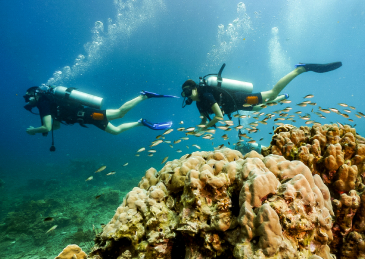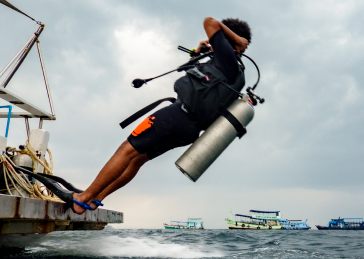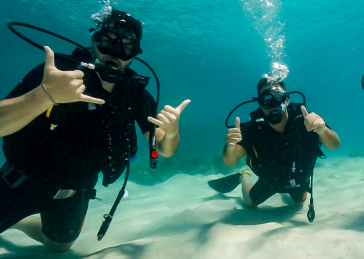Modified 9th June 2025
Rescue Diver in Koh Tao: Complete Training Guide
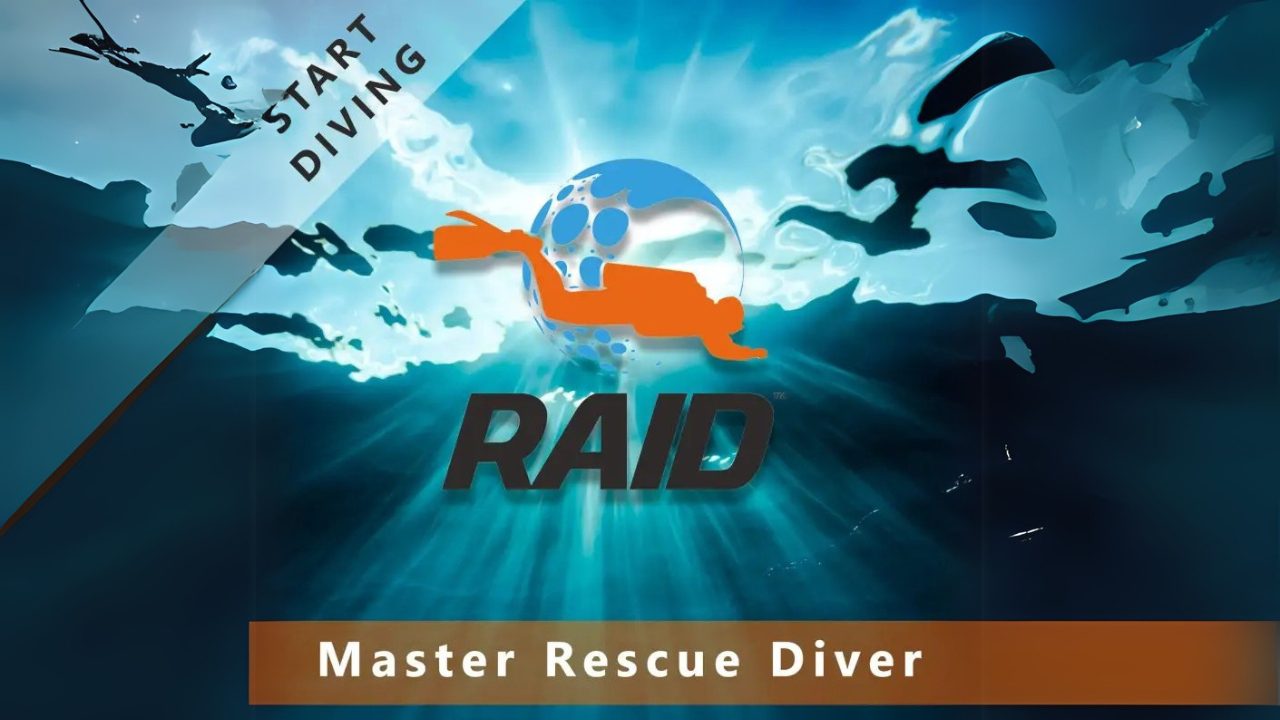
Becoming a Rescue Diver in Koh Tao represents one of the most rewarding steps in your diving education. This advanced certification transforms you from a casual diver into a confident underwater guardian, equipped with skills to prevent and manage diving emergencies. Thailand’s premier diving destination offers ideal conditions for rescue training, combining excellent underwater visibility with a supportive learning environment.
En journey to Koh Tao marks the beginning of an intensive but fulfilling educational experience that builds confidence, sharpens problem-solving abilities, and prepares you for real-world diving emergencies.
Why Choose Koh Tao for Rescue Diver Training
Koh Tao’s reputation as a world-class diving destination makes it an exceptional location for Rescue Diver certification. The island features over 20 diverse dive sites, from shallow protected bays perfect for skill development to deeper waters that challenge your newly acquired abilities. Understanding la historia de Koh Tao helps appreciate why this small island became Thailand’s diving education capital.
Warm tropical waters with excellent visibility create ideal learning conditions for practicing rescue scenarios safely and effectively. The best time to dive in Koh Tao ensures optimal training conditions.
Highly qualified rescue instructors with thousands of certifications provide expert guidance through complex emergency procedures.
Diverse dive sites allow practice in various conditions, from controlled environments to challenging open water scenarios. Explore Koh Tao’s top dive sites for rescue training opportunities.
Train alongside divers from around the world, learning different perspectives on dive safety and emergency response. The diverse marine life around Koh Tao provides realistic training scenarios.
The calm, protected waters around Koh Tao provide the perfect training ground for mastering rescue techniques. Understanding optimal diving conditions helps you plan your rescue training during the best weather windows.
Course Structure and Training Components
The Rescue Diver course in Koh Tao follows a comprehensive three-phase approach designed to build skills progressively. Each component plays a crucial role in developing your emergency response capabilities.
Phase 1: Theoretical Foundation
Classroom sessions cover rescue psychology, stress recognition, emergency management, and accident prevention. You’ll study real-world scenarios and learn to identify potential problems before they become emergencies.
Phase 2: Controlled Water Practice
Pool or confined water sessions allow you to practice rescue techniques in a safe, controlled environment. Skills include self-rescue, assisting panicked divers, and equipment problem management.
Phase 3: Open Water Scenarios
Real-world rescue simulations in Koh Tao’s dive sites test your abilities under actual diving conditions. These challenging scenarios prepare you for genuine emergency situations, whether you’re dealing with equipment failures near diverse marine environments or managing stressed divers in various underwater conditions.
Essential Skills You’ll Master:
- Self-rescue and stress management techniques
- Recognizing and responding to diver distress
- Underwater search and recovery procedures
- Emergency ascent management
- Unconscious diver rescue and surface support
- Equipment failure problem-solving
- Panic prevention and management
- Rescue breathing and first aid coordination
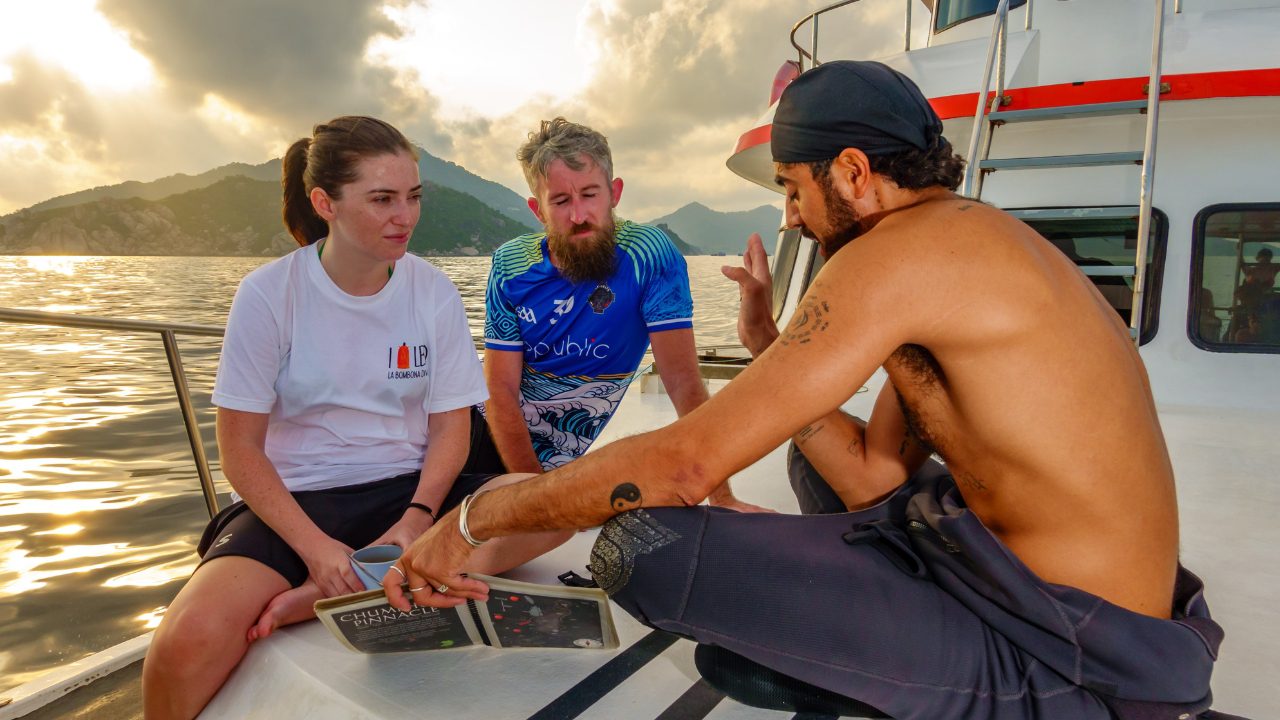
Certification Agency Comparison
When choosing Rescue Diver training in Koh Tao, you’ll encounter three main certification agencies, each offering unique approaches to emergency response education.
| Agency | Course Focus | Training Style | Unique Features |
|---|---|---|---|
| PADI Rescue Diver | Proactive problem prevention | Structured scenarios | Global recognition, comprehensive materials |
| RAID Master Rescue | Buoyancy control emphasis | Digital learning tools | Environmental awareness, flexible pacing |
| SSI Stress & Rescue | Stress management priority | Self-paced online study | Psychological approach, flexible scheduling |
All three agencies maintain high safety standards and produce competent rescue divers. Your choice often depends on learning style preferences and the specific strengths of your chosen dive school.
Readiness Assessment Guidelines
Are You Ready for Rescue Diver Training?
Evaluate your readiness for Rescue Diver certification in Koh Tao using these guidelines:
- ✓ Advanced Open Water certification – Required for enrollment
- ✓ 20+ logged dives – Minimum experience recommended
- ✓ Current First Aid & CPR certification – Essential for course completion
- ✓ Comfort with emergency situations – Ability to stay calm under pressure
Readiness Levels:
✅ READY: Advanced Open Water + 50+ dives + Current First Aid + Comfortable with emergencies
⚠️ ALMOST READY: Meet most requirements but may need experience or certification updates
❌ NOT YET READY: Need additional certifications and diving experience first
Ready to assess your qualifications personally?
Discuss Your Readiness with Our InstructorsPrerequisites and Course Duration
Before enrolling in Rescue Diver training in Koh Tao, you must meet specific prerequisites that ensure you have the foundational skills necessary for emergency response training.
Required Prerequisites:
- Advanced Open Water certification (or equivalent)
- Current First Aid and CPR certification
- Current Oxygen Administration certification
- Minimum age of 15 years (12 years for Junior Rescue)
- Medical clearance if required by health conditions
The course typically spans 3-4 full days, depending on group size and weather conditions. Some students benefit from additional practice sessions to master challenging skills. Understanding medical requirements for diving ensures you meet all health prerequisites before beginning training.
Choosing Your Rescue Diver School
Selecting the right dive school for your Rescue Diver certification in Koh Tao significantly impacts your learning experience and skill development. Consider these crucial factors:
- Instructor Experience: Look for instructors with extensive rescue training backgrounds and real emergency response experience
- Tamaño de la clase: Smaller groups (4-6 students) provide more individual attention during complex skill development
- Historial de seguridad: Choose schools with excellent safety records and comprehensive emergency protocols
- Equipment Quality: Modern, well-maintained rescue equipment enhances training effectiveness
- Language Options: Ensure clear communication in your preferred language for complex technical concepts
Research dive school reviews and speak with former students to understand the quality of instruction and training environment.
Ready to become a confident underwater rescuer in Koh Tao? La Bombona Diving’s Master Rescue Diver program transforms you into a skilled emergency responder through comprehensive, hands-on training.
Our experienced instructors guide you through realistic rescue scenarios in Koh Tao’s premier dive sites, ensuring you develop both the technical skills and confidence needed for real emergencies.
- Comprehensive 4-day rescue training program
- Expert instructors with real emergency experience
- Small class sizes for personalized attention
- Modern rescue equipment and safety protocols
- Realistic training scenarios in diverse conditions
- RAID certification internationally recognized
- First Aid and O2 administration training included
- Flexible scheduling to fit your travel plans
Master Rescue Diver Core: ฿11,000
Master Rescue Diver + First Aid & O2: ฿14,000
4 rescue dives over 3 full days | All equipment included | First Aid certification available
Advanced Skills and Career Progression
Completing Rescue Diver training in Koh Tao opens pathways to advanced diving careers and specialized certifications. The problem-solving skills and emergency management abilities you develop serve as foundations for:
- Divemaster Training: Professional-level leadership and supervision responsibilities
- Instructor Development: Teaching the next generation of divers
- Technical Diving: Advanced certifications requiring enhanced safety skills
- Dive Tourism Careers: Working in the international diving industry
Many rescue divers find their skills transfer to other areas of life, improving their ability to remain calm under pressure and make quick, effective decisions. The certification also makes you a more valuable dive buddy, as other divers appreciate having a trained rescuer on their team.
Consider exploring professional diving programs after completing your rescue certification to continue your diving education journey.
Preguntas frecuentes
Bucea con LBD: tu puerta a la exploración submarina
Whether you’re a curious beginner or a seasoned pro, our school is your portal to the wonders of scuba diving. Join us into the world beneath the waves.
¿LISTO PARA EMPEZAR?
Consulta nuestros cursos de buceo en Koh Tao
